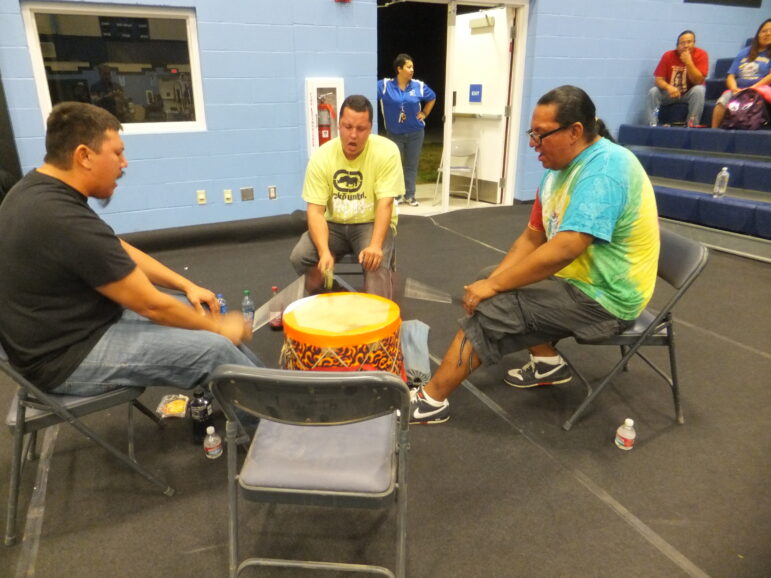Among the Lakota and other Native American peoples, the drum occupies a position of great cultural and symbolic power. It is more than a musical instrument; it is a living entity, a spiritual guardian, and a direct connection to the heartbeat of Mother Earth. From intimate ceremonies to vibrant powwows, the drum’s rhythm carries the songs, stories, and prayers of the people.
This blog explores the deep spiritual meaning of Native American drums, the different types used in ceremonies, and the structure of the songs that give them a voice.

The Spiritual Heartbeat: Why the Drum is Sacred
Regarded as a living entity, the drum is viewed simultaneously as a spiritual guardian and a musical instrument, a living tradition and a reference to a past way of life.
As Meredith Schramm, a Native American advisor for the Provo City, Utah, school district, states, “Students will understand that the drum is important to the Native American culture because the drum represents the heartbeat of the earth.” She adds, “When it is used, we are acknowledging that our Earth is alive and well.”
This sentiment is echoed by Dustin Jansen, an assistant professor at Utah Valley University: “Someone outside of the Native American culture might think the wood used is now dead… but to Native Americans, the tree and the animal remain alive when the drum is used and we can hear its voice.”
How Native American Drums Are Made
A central instrument in many communities was, and still is, the drum, as one can tell by simply going to any powwow. While traditions vary by tribe, the basic construction is similar: a wooden frame or a hollowed log with tanned buckskin or elk hide stretched tightly and laced with sinew. Drum groups often tune by adjusting moisture and tension to achieve a steady, resonant beat.

Types of Native American Drums
While traditions vary by tribe, some types of drums are central to Native American music and culture.
The Powwow Drum
A large community drum played by a circle of singers. Its deep, steady beat calls dancers and helps signal changes within songs.
The Hand Drum
A smaller, personal drum held by one person. Common in storytelling, round dances, and small ceremonies.
The Water Drum
A small wooden or clay drum with a small amount of water inside to adjust pitch. Used in some Northeastern and Anishinaabe traditions and in the Native American Church. Its tone is distinctive and can be retuned during use.
The Language of the Drum: Understanding the Songs
2017 Running Strong for American Indian Youth® Dreamstarter Teacher Meredith Schramm used her grant to develop lesson plansfor teachers. “There is so much information about Native history, but teachers don’t know where to find information about Natives TODAY,” she told us in her Dreamstarter Teacher application.
Her work focuses on teaching the living structure of Bative American drum music. “The different beats of the drum help dancers know which style to dance, and by listening for the different parts of each push-up dancers can tell when the song will be done,” Meredith explains.
Through the lesson plan, students learned the following terms:
- Grand Entry: The song that brings dancers into the dance area.
- Flag Song: The flag song is similar to a national anthem.
- Veterans Song: A song to honor those who served in war or in civil service.
- Sneak up: A men’s dance that tells a story.
- Intertribal: All tribes participate. Intertribal songs refer to social dances.
- Crow Hop, Double Beat, Side Step: Styles of dance that can be differentiated by the different beat of the drum.
- Round Dance: A winter social singing ceremony using hand drums.
- Duck and Dive: Refers to a dance that retells the story of battles between tribes and the U.S. Army.
Many powwow songs are organized in cycles, often called “push-ups,” similar to verses. A push-up typically has a lead and chorus (‘second’), often repeated; dancers may hear honor beats near the end. Terminology varies by region.
- Lead: a solo or small group begins the song.
- Body: the full chorus joins and carries the main melody.
- Honor beats: accented beats that mark respect or signal changes for dancers.
Styles and terminology can differ by region and community.

Preserving the Heartbeat for Future Generations
For further study, Meredith recommends the book, “The Drum Beats On,” by Janelle Cherrington, written for fourth grade students to expand their knowledge about the importance of the drum, why it is sacred, and where it is used.
Meredith’s goals for her lesson plans are to bring more awareness about Native Americans, saying “I think if there is education about these subjects, then there will be more understanding.”
In addition, she believes her lesson plans will instill confidence in Native youth:
“I know our Native numbers are small. But when a Native lesson is taught in a classroom where there is a Native student, they can feel pride…especially when it is a topic about something they can understand about Natives today, and our successes and our struggles.
Support programs like the Dreamstarter Teacher grants that help preserve and share Native American culture for future generations.


